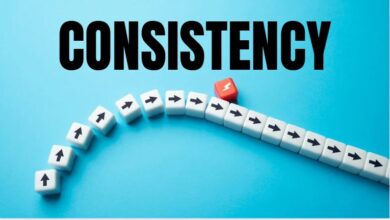5 Steps To Setting Realistic Goals

Goal setting is a powerful process for thinking about your ideal future, and for motivating yourself to turn your vision of this future into reality.
The process of setting goals helps you choose where you want to go in life. By knowing precisely what you want to achieve, you know where you have to concentrate your efforts. You’ll also quickly spot the distractions that can, so easily, lead you astray.
Step 1 – Write Your Goals Down
Studies and surveys have shown that you are far more likely to achieve your goals if you write it down. I personally like to write my goals down and refer to them daily to keep them at the front of my mind.
Writing down our goals also helps make them real to us. If we just think about a goal, it’s not physically real – and it’s easy for us to change our minds. When we write it down however, the very act of writing helps us commit to the goals – and also gives us something we can visually see and reflect on.
Step 2 – Set Short Term Milestones
Goals that are far out of reach are easy to procrastinate on and put off. It’s fine to have long term dreams – but in the short run, you should have regular mile stones as well.
For example, if your goal is to write a novel, rather than just saying you’ll write a novel this year and leave it at that, instead commit to a certain number of pages or words a month – these short term milestones will help you stay on track, and will make your long term goal much more manageable.
Step 3 – Be Specific
If your goal is to “lose weight” – how will you know when you’re done? Going along with the above of setting short term mile stones, even if your long term goal is “get in better shape” – you can still be specific such as “be in good enough shape to play football for two hours twice a week.”
The more specific you are, the better motivated you’ll be as you get closer to achieving your goal. With vague goals, it’s very easy to get discouraged, because you may not feel like you’re getting closer to due to having no clear end in sight.
Use specific, tangible words in your goals such as measurements and (if applicable) a date by which they will be accomplished.
Step 4 – Measure Actions as Well As Progress
Sticking with the theme of setting fitness goals, many people I know get frustrated when they set a specific goal such as “lose 20 pounds by summer” – and then fall short of their goal. While it’s good to have aggressive goals, in some situations it may be better to measure your actions instead of your progress.
So for example, instead of setting fitness goals based on pounds lost, you could set goals for the amount of cardio you do every week and whether you keep your calories below a certain threshold.
This is also good for vague goals that may be difficult to measure, such as achieving proficiency playing a sport or playing an instrument. Setting goals based on perhaps 1 or 2 hours of practice a day may be more helpful than simply saying “get better before school starts.”
Step 5 – Start With Just One Goal
A classic mistake that I see over and over, and that I’ve made many times myself, is to be overzealous and try to change too many things at one time. You may decide you want to turn your life around and set out to accomplish a laundry list of goals at once.
Unfortunately, trying to accomplish too many things at once is frequently a recipe for failure. For most people, changing too many aspects of their lives requires an overwhelming amount of willpower, and ends up being unrealistic.




